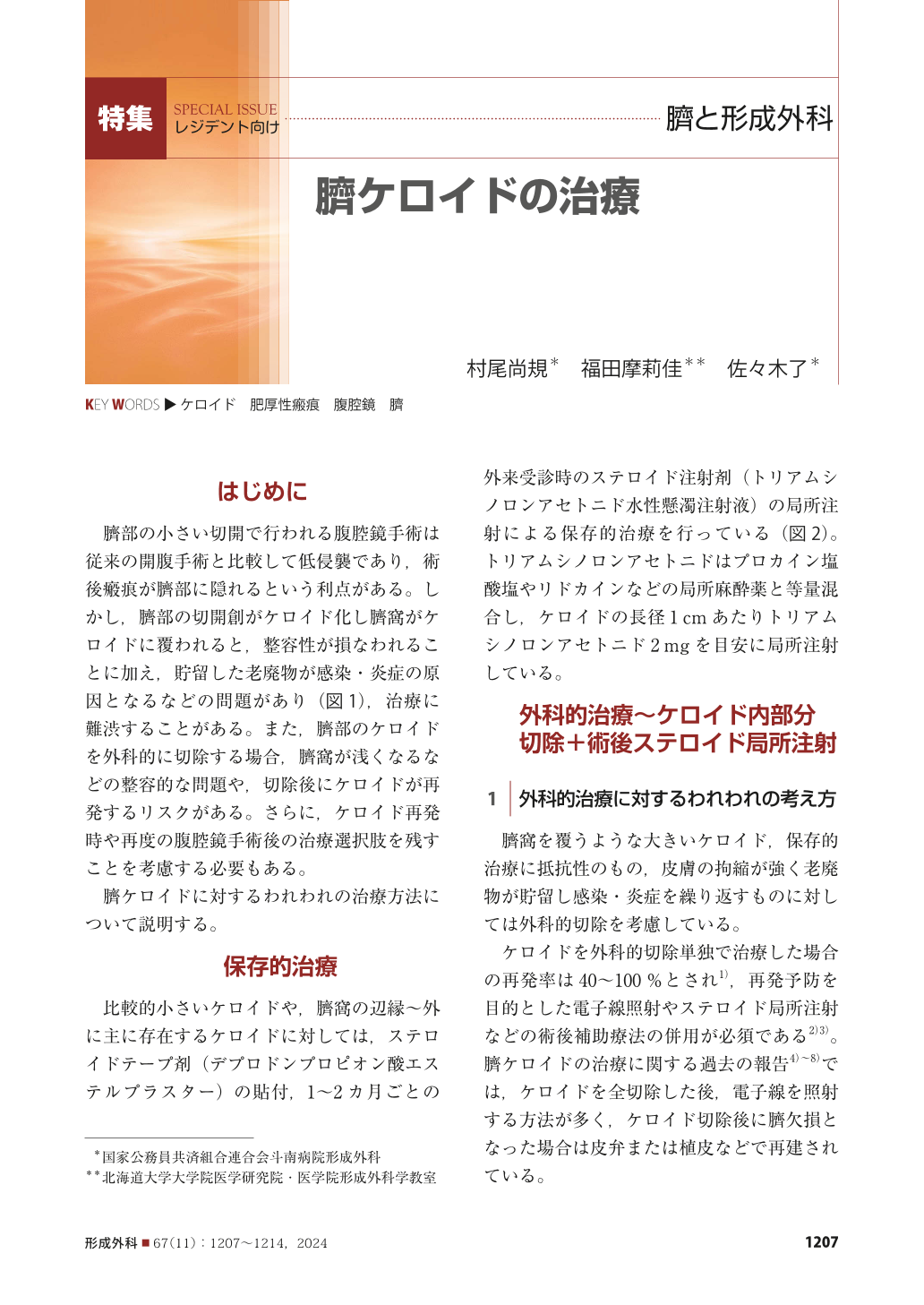Japanese
English
- 有料閲覧
- Abstract 文献概要
- 1ページ目 Look Inside
- 参考文献 Reference
はじめに
臍部の小さい切開で行われる腹腔鏡手術は従来の開腹手術と比較して低侵襲であり,術後瘢痕が臍部に隠れるという利点がある。しかし,臍部の切開創がケロイド化し臍窩がケロイドに覆われると,整容性が損なわれることに加え,貯留した老廃物が感染・炎症の原因となるなどの問題があり(図1),治療に難渋することがある。また,臍部のケロイドを外科的に切除する場合,臍窩が浅くなるなどの整容的な問題や,切除後にケロイドが再発するリスクがある。さらに,ケロイド再発時や再度の腹腔鏡手術後の治療選択肢を残すことを考慮する必要もある。
臍ケロイドに対するわれわれの治療方法について説明する。
Laparoscopic surgery with an umbilical incision is a minimally invasive treatment with a shorter wound length, less postoperative pain, and rapid recovery compared to conventional open abdominal surgery. However, once an umbilical keloid has developed, the patient suffers from not only disfigurement but also inflammation and infection. Small or periumbilical keloids are treated conservatively with steroid plaster and steroid injection. Large keloids covering the umbilical fossa are difficult to treat because they are resistant to conservative treatment, and treatment options for recurrence after surgical excision must be reserved. To resolve these problems, we have performed intralesional keloid excision and postoperative steroid injection. Our treatment method is minimally invasive and repeatable.

Copyright© 2024 KOKUSEIDO CO., LTD. All Rights Reserved.


